|
|
Post by tod2 on Dec 19, 2011 11:18:32 GMT
This is an attempt to take you through my city of Pietermaritzburg, the capital of our province, namely KwaZulu-Natal. When the first Voortrekkers arrived in 1837, they found a tranquil countryside graced by forests, hills and valleys. They settled on a fertile tract of land beside the Umsindusi River and named it after two of their leaders, Gerrit Maritz and Piet Retief. Here is an interesting link which explains things a bit more: en.wikipedia.org/wiki/KwaZulu-NatalAs it is only possible to take photos at weekends when the traffic has died down, this photo-essay of my city and surroundings may take me into next year. Maybe a little bit at a time is a good thing.... I am going to start at one specific place but from then on it's as the opportunity occurs: The Oldest House in Town. It is believed the house at 333 Boom Street was built by Petrus Gerhardus Pretorius, cousin of Andries Pretorius(both Voortrekker or Pioneers) in April 1846. The capital of South Africa, Pretoria, itself was founded in 1855 by Marthinus Pretorius, a leader of the Voortrekkers, who named it after his father Andries Pretorius It is built of shale with a thatched roof. The house originally had three rooms downstairs and one upstairs connected by a yellowood staircase. The kitchen and fireplace were outside. After 1900 the thatch roof was replaced by a corrugated iron roof, outside walls plastered and windows altered. The property changed hands several times but in 1982 the house was purchased as a satellite museum of the Voortrekker Museum Complex and was further restored. The green sign in front says "Die Voortrekkerhuisie" (The Voortrekker House).   On the other side of the street next to the Voortrekker house is an example of an early Maritzburg house, the kind my grandparents lived in, that has been renovated to accommodate a business.  Further along Boom street, sandwiched between business premises is this house. It has remained in this state of disrepair ever since I attended school here in Pietermaritzburg 1962/63. Classified in 'The Green Book', a catalog of the buildings in this city, the house is described as a single story Voortrekker verandah cottage with a corrugated iron saddle roof and a wooden supported veranda. I have always wondered why no-one has ever renovated it - almost lost in a time zone and steadily going downhill through the years.  This house is one building away and a carbon copy of the derelict house except it has been renovated., which is a long way from being restored.... 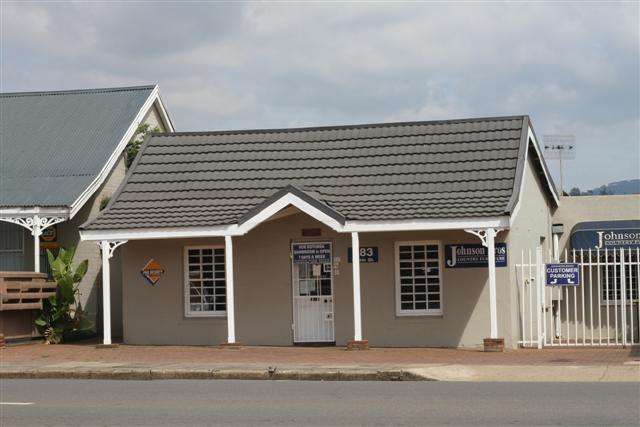 Walking further up away from the city centre but staying in Boom street is this old house with it's clipped bougainvillea. It houses several little shops selling trinkets, chocolates, antiques and also a coffee shop which looks out over an English style garden. Unfortunately it was closed but I will go back and show you the rest.  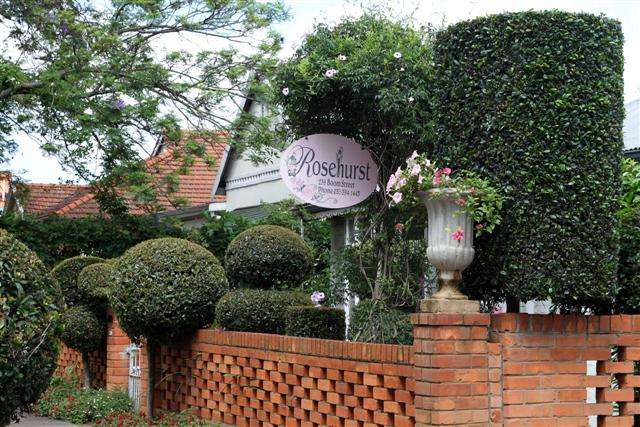  We are now on the corner of Boom and Chapel streets and this is the school my mother attended as a young girl. Russell High School is a national monument and still an all girls school.    High up on the gables the bricklayer shows artistry in his craft.     Looking down Chapel street from the school, past my place of business (show you later) and on up the hill to my home.  Doing a 180degree turn and facing up the street and on the corner of the next street parallel to Chapel, namely Pietermaritz street, we are looking at a building with a 1901 on the wall. The Green Book says absolutely nothing about this building but my mother of 90 recalls it used to be a mortuary at one time. Now it houses "ladies of the night" who entertain day & night!  Walking up to the next intersection of Chapel & Church streets is a lovely old building housing a furniture shop. In past days I recall it being a department store of note.  Staying on the same side of the street further along Chapel is a sort of 1920's building housing some apartments and called Eastbourne Mansions.  Walking to the next intersection of Chapel & Burger streets is a disused Christian Scientist church. Now housing several businesses. With it's brosley tiled roof, red brick walls and plastered bands it stands as a fine example of Edwardian church building and was declared a national monument in 1981.  The road drops sharply and houses hang onto the side of the hill.  Looking across the road is the back entrance the this very large house (front view in a minute) and I notice the back wall onto the street has windows. This could have been servants quarters in the old days.  Right on the bend I found this old neglected fuse box of some kind.  On the high side of the road opposite stands a fine example of Victorian architecture as "Baynes Town House", now housing a firm of attorneys at law.   The ironwork around the veranda is known to South Africans as "broekie lace" which translated is pantie lace. You will see many examples of this on the houses.   One house away- also attorneys in residence  Another funny looking cast iron gizmo on the sidewalk. Does that say 'Glasgow' at the bottom? 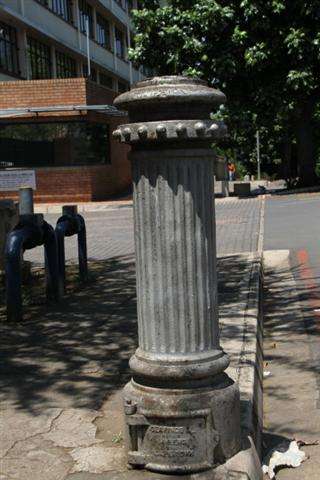 Right opposite is this gorgeous house and I think my favourite in the whole city.  The lowly little house next door is completely dwarfed by it's haughty neighbor.  Well I hope that was an interesting introduction to some old buildings in my city...more later. |
|
|
|
Post by bixaorellana on Dec 19, 2011 15:47:24 GMT
I can't wait, Tod! This is wonderful stuff -- a real look into a different part of the world. What strikes me about its beauty is that it seems elegant, yet not stuffy, homey in fact. I love the soft color of the red brick. The different architectural styles are most interesting in that they all seem to have a particular local touch to them. The wrought iron is lovely! Except for the building behind the former mortuary, there don't seem to be any big tall slabs of buildings. Is that the case, in fact? Certainly the rolling landscape is really pleasing with all the greenery.
|
|
|
|
Post by onlymark on Dec 19, 2011 15:51:42 GMT
I certainly could live there.
The fuse box thingy - old street lights?
|
|
|
|
Post by tod2 on Dec 19, 2011 16:29:35 GMT
We are strolling through the old city itself, which as you will see is very Victorian. Further out in the suburbs some people have purposely built in the old style and it looks very nice. I will try and find some examples.
Yes Bixa, there are very few high buildings. The one in the background is certainly the only one slap bang in the city centre. I will get to the rest eventually.
onlyMark - I dunno quite frankly. The cast iron it's made of was cast in England as I recall reading something on the side of it. Probably did have something to do with street lights.
|
|
|
|
Post by Deleted on Dec 19, 2011 17:53:00 GMT
This is exactly the kind of report that I love to see, tod2. It's nice to know a few things about the various buildings, because when I took my 4000 km road trip through South Africa, I was completely mesmerized at how some of these towns were so pristine and seemed to have stopped the calendar around 1940 (except for the cars!). It was as though the residents had decided at some time in the past "this is exactly how we want out town to look and we will never change anything again."  (Of course I see the modern building behind the establishment of the entertainment ladies!) And naturally, to an outsider like me, it was so amazing to leave a town like this and be passing through a Zulu village fifteen minutes later, also anchored in another era (except for the TV antennas and a few other additions). I will be looking forward to every addition to this report. |
|
|
|
Post by fumobici on Dec 19, 2011 21:47:06 GMT
What a wonderful little photo essay and what a charming town. Odd for me to think that this town and the town where I live both arose at around the same time yet so far apart and how many of the old buildings look so similar.
|
|
|
|
Post by tod2 on Dec 21, 2011 11:56:51 GMT
Thanks for the encouragement Bixa, Mark, Kerouac & fumobici! I wish I could just take photos carte blanche but street scenes with the locals can get very odd and sometimes angry reactions so I've got to tread carefully. I'll try your 'sneaky' way of getting a shot Kerouac and see what happens  I've added the last few photos of this walk by just modifying. I have heard Rosehurst is open on 24th December when all else, including our business, is closed. Hope it's good weather..... |
|
|
|
Post by imec on Dec 21, 2011 13:58:21 GMT
Oh! I love this t2! I know so little of this part of the world - what a very pretty place.
|
|
|
|
Post by tod2 on Dec 24, 2011 14:17:02 GMT
|
|
|
|
Post by Deleted on Dec 24, 2011 14:33:41 GMT
Beautiful. I think it is a great idea to have little shops in each room.
|
|
|
|
Post by bixaorellana on Dec 24, 2011 16:25:26 GMT
Oh, Tod -- that garden!!!
Those pictures are a real Christmas present. Thank you so much for showing us this. You take such super pictures and your presentation is always a treat.
What a lush place, but it looks so friendly too -- certainly the waitstaff seems jolly. Oooo, that bookstore, and the menu, and and and .......!
Really looking forward to more of this thread.
|
|
|
|
Post by tod2 on Dec 24, 2011 16:57:10 GMT
Bixa, Yes, isn't it just too divine dahling....!!
Kerouac, I hope you took note of the prices - Full English which my husband had, was less than 5euros.
I had the croissant with creamed scrambled eggs and bacon for around 4euros.
This is why we find it so difficult to find a satisfying breakfast in a hotel for less than 10euros.
(I will continue to eat a baguette and coffee at Metro Esplanade La Defense for around 3.5euros....!!)
|
|
|
|
Post by Deleted on Dec 24, 2011 17:11:10 GMT
Yes, I do always look at those incredible prices in rands. Even though my only trip to South Africa was more than 10 years ago, I was already impressed back then at how reasonable the prices are. (Naturally, I do understand that certain geopolitical considerations have probably undervalued the rand quite a bit.)
|
|
|
|
Post by mich64 on Dec 24, 2011 18:13:30 GMT
Oh my, Tod, so elegant yet welcoming. Breakfast and shopping, I would probably be there until dinner time! How delightful, I really enjoyed these photos of your breakfast.
Cheers!
Mich
|
|
|
|
Post by Deleted on Dec 25, 2011 11:12:07 GMT
This is lovely Tod!! I have to admit I started to shudder when I saw all the clipped boxwood,I had a garden job years ago and one of my tasks was keeping the boxwood shaped and clipped as in the pics. I loathed it and invariably could not quite get it right,consequently, it always looked like a bad haircut.  I love love the shot of the more chaotic garden spilling over in a carefree almost wild manner,much more my style and taste. The library pics are fantastic. I could sit in there for hours it looks so cozy!! Thanks so much for this. |
|
|
|
Post by tod2 on Dec 27, 2011 10:03:30 GMT
OK you wonderful people, here are more photos of Sleepy Hollow ( a genuine name for the city!). The City Hall taken at dusk.  The City Hall in Pietermaritzburg is located on the corner of Commercial Road and Church Street was built on the grounds of the old 'raadsaal' (meeting hall), and dominates the city centre with its 150ft clock tower. It is said to be the largest all-brick building in the Southern Hemisphere and coincidentally houses the world's largest pipe organ. The first City Hall was built in 1893 and was destroyed by fire in 1898. The Duke of Cornwall and York (later King George V), formally opened the current Pietermaritzburg City Hall after restoration, on 14 August 1901.  The Coat of Arms depicting an elephant which is the symbol of the city.    The portico` where dignitaries are dropped off.   Looking across the road at the start of the partly pedestrianized mall through the city centre.   One lonely elephant doing his best to be a Xmas light!  And the next morning in daylight with a view down the main road into the city.  Continuing our stroll we walk down Longmarket street - now renamed something unpronounceable. This building was housed by Barclays Bank for many years and went up for sale - now I see they have recently moved their automatic cash machines back inside under their new name First National Bank.  Across the street, a building which we called the "Creamery Building" and I think in the old days it sold milk products.   This suedo Cape Dutch building has really gone to the dogs. At one time it was the swankiest place in town and known as The Victoria Club. Ladies were not permitted to enter this gentleman's establishment through the front door, and had a special side entrance for them. Yes, even the wives!  It served the only edible food in town besides one other restaurant. Now.........a one time bowling alley, but I think that's all washed up too.  Right next door it is the main post office. 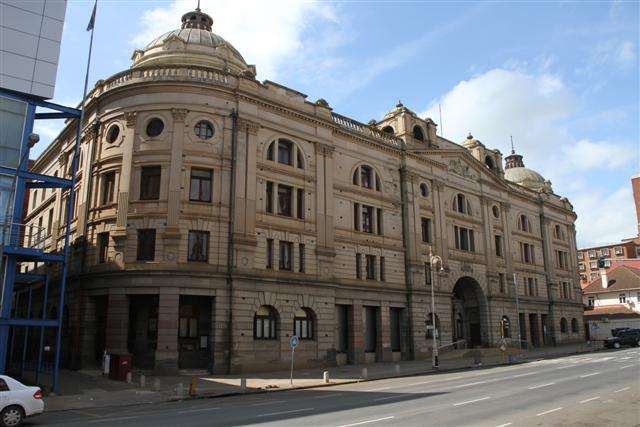    Directly across the road is our Provincial Legislature. Pietermaritzburg being the Capital city.   Queen Victoria stills stands dignified in front , with her ceremonial rod & orb - she may look a bit dirty as some idiot through black paint at her and I think it's too hard to remove entirely.  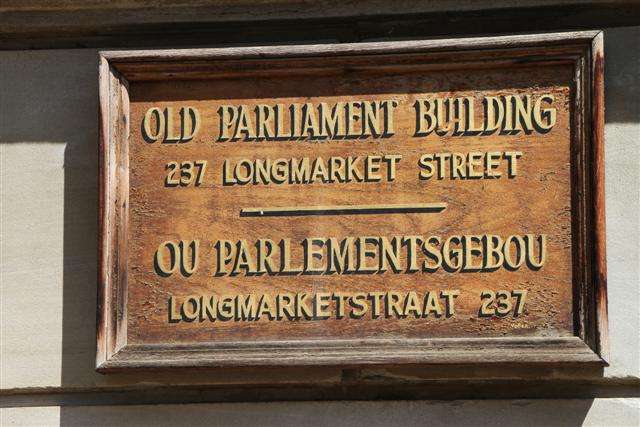   Just visible through the grounds of the Legislature is the top of the Tatham Art Gallery, which I will take you through later.  Also in the grounds is a statue of Sir Theophilus Shepstone. Sir Theophilus Shepstone is one of the major figures in Natal colonial history. He was the secretary for native affairs and respected councilor for the Zulus from 1845   Coming up next.....On thre trail of His Imperial Highness Prince Napoleon Eugene Louis Jean Joseph Bonaparte |
|
|
|
Post by tod2 on Dec 27, 2011 13:18:19 GMT
Continuing our stroll through Sleepy Hollow I must point out the information place for tourists - this building is 'Publicity House' and desperately needs another clean-up. It looked mightly spiffy some years ago.....  A wonderful days outing for school kids is a visit to our local museum.  Don't you just love the bugs on the wall?  Right next door is the main city police station - there are several on the outskirts and one in particular is worth a look later...   Exactly oppossite the police building is a wonderful old hotel called The Imperial Hotel.  The old hitching post - still there after all these years...  The Imperial Hotel was origionally a private residence built in 1877 by Mr T. Woodhouse, who was later Mayor of Pietermaritzburg.In 1878 Mr George Trhresh converted it inot a hotel. It was named after the Prince Imperial of France who stayed there during the Anglo-Zulu War.    His Imperial Highness Prince Napoleon Eugene Louis Jean Joseph Bonaparte Prince Imperial of France, 1856-1879, photographed in April/May 1879 Natal, South Africa A fascinating history lesson about Bonaparte: www.travellersimpressions.com/process/articlepage.php?storycode=rg0010The original floor tiles still exist.   Courtyard fountain.      The Napoleon Room for large functions.  Not to be left out - Victoria & Albert  The elevator - with a clock that has a Paris mark.(could be fake).   Next up is Mahatma Gandhi's footsteps...... |
|
|
|
Post by tod2 on Dec 28, 2011 7:51:48 GMT
So on we go. Taking the main road through the city we head for the railway station. The last train I boarded from the old station was on an organized excursion into the countryside. I did ask a female security guard about trains and she said the one from Johannesburg to Durban does not stop here. There was no evidence of anyone else around on this particular day - which was good for us, being able to photograph at our leisure.   Inside, the wooden ticket windows still remain but I don't think they have sold any tickets recently...   Luggage trolleys pushed to one side as there are no customers in need of portering their suitcases to the train carriages.  Not a passenger in sight.....   On the platform is a pedestal marking the spot where Mahatma Gandhi was thrown off the train.  Even the sign is in need of a face lift.    I never thought they weighed the luggage but it looks like they must have....  The main lobby.  Looking into a waiting room I spot Gandhi's photo. This must be where he spent a night.  Mahatma Gandhi Pietermaritzburg is also famous for an incident early in the life of Mahatma Gandhi. In May 1893, while Gandhi was on his way to Pretoria, a white man objected to Gandhi's presence in a first-class carriage, and he was ordered to move to the van compartment at the end of the train. Gandhi, who had a first-class ticket, refused, and was thrown off the train at Pietermartizburg. Shivering through the winter night, in the waiting room of the station, Gandhi made the momentous decision to stay on in South Africa and fight the racial discrimination against Indians there. Out of that struggle emerged his unique version of nonviolent resistance, Satyagraha. Today, a bronze statue of Gandhi stands in Church Street, in the city centre  Stepping outside again we get a good view of the main road through town - the tallest building in the centre, and the clock tower of my old school.  Before leaving the train station yard, we drive further along to see what has become of the old goods sheds where I regularly handed in large shipments of fabric for shops in far off country towns. What a sorry sight met our eyes....    The little wood & iron office was derelict and filthy. Not only did I bring goods here, but my Grandfather was in charge of this Goods Platform for many years when he worked as a railwayman. I stood in the abandoned silence, listening for the hollow echo of ghost voices on the soft breeze that had sprung up - whispers from my Grandad, and then the portly clerk who hastened the workers to off-load my truck, and their chatter as they took their time....  Freight containers left to rust.    Back down the hill past my old school where I completed my formal education. During the two years I was there none other than my mother's class teacher came to tutor my class! She was a prim & proper Miss, and strict as she was in my mom's day. It is now a Technicon and night school for adult education.  Entering the Maritzburg Pedestrian Mall a tall stick figure comes into view......Could it be? Why yes, it's old Mahatma Gandhi !   He is hurriedly walking past another grand old building which was once the Supreme Court House, greeting folks all day long. You will notice he is not wearing his famous rounded spectacles. They were removed by a schoolboy vandal some years ago and never replaced. Pity - I think it doesn't quite look like him without them.   I hope all this history is not too boring. |
|
|
|
Post by Deleted on Dec 28, 2011 18:52:45 GMT
Boring?  Absolutely not, tod2. This is one of the best and most complete reports EVER. It really shows all different parts of the city, warts and all. The Victorian aspect reminds me very much of the time I spent in Port Elizabeth, but the tower on city hall reminds me of the Flemish belfries, even though in Flanders they always tried to make them taller. The elephant theme, the statue and plaque about Gandhi and the photo of "His Imperial Highness Prince Napoleon Eugene Louis Jean Joseph Bonaparte" turn it all into a stunning cocktail of diversity. I come from a railroad family on both sides of my heritage, so any time you show me train stations or freight containers, I am automatically fascinated. As far as I'm concerned, you have outdone any of my reports and I certainly hope that you will show us more of the region! |
|
|
|
Post by tod2 on Dec 28, 2011 19:08:17 GMT
Well that's good to hear Kerouac because sometimes too many historical facts that don't mean anything to anyone reading them can be a bit uninteresting. I have not finished with the central core of the OLD city - (no new buildings are worthy of a mention), and then will slowly spread outwards to the more sordid bits. By that I mean living conditions, shopping conditions and litter, unfortunately. I also have a number of temples and mosques that may be interesting as well as other Christian religious groups which have sprung up since the Nigerians/Zimbabweans/Congolese etc etc., moved into town. I don't know how lucky I will be at capturing their premises and strange sounding names, but I'll try. Then there are the gardens - botanical and others. A bit more to see yet. And btw, you have never posted anything that has not captured my attention wholeheartedly  |
|
|
|
Post by Deleted on Dec 28, 2011 19:25:34 GMT
And that goes to prove that what we know about and see every day can be extremely interesting to others. I know that a lot of people here have wonderful stories to tell but they are worried that they will not be well received. Nonsense!
|
|
|
|
Post by bixaorellana on Dec 29, 2011 0:10:52 GMT
What he said!!! Sleepy Hollow ( a genuine name for the city!) Really?! I thought you were making a comment on how quiet your city is. Longmarket street - now renamed something unpronounceable. What is the name now, please, & why was it changed? Don't you just love the bugs on the wall? Not the cockroach! none other than my mother's class teacher came to tutor my class! She was a prim & proper Miss I went to the 1st half of 9th grade in Indiana, then we moved to Louisiana for the second half of the school year. I had been devastated, as I simply could not get algebra. To the rescue came Miss Eudolie Matthews, retired, & formerly math teacher of my mother, uncle & other youth of the town. I became quite good at math -- thank you, Miss Eudolie! will slowly spread outwards to the more sordid bits. By that I mean living conditions, shopping conditions and litter, unfortunately. I am really looking forward to that, Tod. I know I have a tendency to snip some of the uglier or messier bits out of my photos, although those things are part of the reality. ... sometimes too many historical facts that don't mean anything to anyone reading them can be a bit uninteresting... Not at all, Tod. I really appreciate that you took the time to find and present the history to round out the picture for us. Then there are the gardens - botanical and others. Be still, my heart!  The railroad station -- which was obviously so beautiful in its day -- made me sad. And you write about it beautifully and evocatively: I stood in the abandoned silence, listening for the hollow echo of ghost voices on the soft breeze that had sprung up - whispers from my Grandad, and then the portly clerk who hastened the workers to off-load my truck, and their chatter as they took their time.... I absolutely love the way the Imperial Hotel is done, sleekly modern, yet with all the older details still on show. It seems quite sophisticated, yet welcoming. Please accept my apologies for not getting back to this wonderful tour more quickly. There is so much interesting detail, it's nicer to drink it in as you post it. Everyone who is away for Christmas will have this wonderful treat waiting for them when they get back. |
|
|
|
Post by mich64 on Dec 29, 2011 5:06:12 GMT
I have been so involved in reading and looking at this report and sharing it with my husband, that I realized that I had not commented how enthralled I am by it. Exceptional Tod! Enjoying every word and picture.
Cheers!
Mich
|
|
|
|
Post by tod2 on Dec 30, 2011 9:21:17 GMT
when I took my 4000 km road trip through South Africa, I was completely mesmerized at how some of these towns were so pristine and seemed to have stopped the calendar around 1940 (except for the cars!). It was as though the residents had decided at some time in the past "this is exactly how we want out town to look and we will never change anything again. What Kerouac commented on partly explains how Pietermaritzburg became "Sleep Hollow", and this explains it further. "Pietermaritzburg is a colonial city caught between pre- and post- apartheid cultures. Founded in 1838 by Dutch Voortrekkers seeking to escape British rule, it ironically developed into a British garrison town and became renowned as a Victorian enclave in the Zulu heartland. Its sedate colonial lifestyle gave rise to the nickname “Sleepy Hollow”, and Tom Sharpe in Riotous Assembly, a satirical novel about apartheid South Africa, rather unkindly dismisses Pietermaritzburg (which he abbreviated to Piemburg), as a “tiny town that seems to have died and been embalmed.” Bixa, I enjoy answering your questions as it makes me look up things I never knew either ;D I am glad you enjoy a bit of background to the photos but my concern was that I may be overdoing it with too many historical facts. Now that you and Kerouac have sety my mind at rest I will continue to include snippets of history. You asked about a street name change: Longmarket Street is Langalibalele Street - I get completely tongue-tied trying to pronounce the new name. I guess in time the whole lot will be changed again so I'm not breaking out in a sweat just yet  |
|
|
|
Post by bixaorellana on Dec 30, 2011 16:39:53 GMT
Ah yes, "the sun is boiling hot" in the original Bantu.  Thanks for the great answers. Really, the history is such necessary context, not just background. As a matter of fact, before you'd even posted the 2nd installment of this thread, I'd looked up Pietermaritzburg, so at least had the bare bones of the Gandhi connection. You may have told us this & I missed it, but ......... traffic? There isn't any! Also, despite the origin of the city and its name, it would seem that the main language was always English. Is that correct? |
|
|
|
Post by tod2 on Dec 31, 2011 10:45:15 GMT
Hi Bixa, Yes, no traffic as we took the opportunity to photograph on Boxing Day when the city was practically empty. Most photos will be taken on Sundays and public holidays - like this Monday coming up.
Here is the explanation of that strange sounding street - I am not sure about ' The Sun is boiling hot' except to say that "langa" is sunshine but the 'boiling hot' would be "ishisa impela" or "Yashisa impele" and then again I have probably spelled it incorrectly!!
Langalibalele was the Hlubi chief who in the 1870s opposed the colonial government on a number of issues, especially the unfair application of gun-registration laws to his people. His trial for treason, now widely seen as a travesty of justice, took place at Government House, which stands at the top end of the street that now bears his name.
|
|
|
|
Post by tod2 on Jan 2, 2012 17:48:17 GMT
Monday 2nd Jan, 2012 - Another holiday in South Africa so we took the opportunity to spring into action and go take those photos! We did start with some significant churches, but as we could not gain access to any except one, we will have to come back to the others later. With an incredible stroke of good luck we were allowed into the most historic church in the city - well, one of the most historic I should say. Taking a few photos on the outside, we were about to give up when the church warden arrived to practice on the organ for an hour, so we were invited inside to take photos at our leisure, all the while being inspired by absolutely beautiful organ music! This long piece of historical facts for you to read - it gives a good picture of what took place here. www.pmbhistory.co.za/index.php?showcontent&global%5B_id%5D=18St.Georges Garrison Church is on a hill overlooking the station, the city, and hills of the suburbs beyond. The hill is called Fort Napier and is recognized by the locals not for the history or the church, but for the mental hospital built on the grounds of the old garrison fort. When I was in my last two years of high school we were forced to attend communion at St.Georges once a month. Although the school boarding establishment was less than a mile away we hated having to walk up the steep incline early on a Sunday morning and sit in the very uncomfortable little chairs (which are still there today !) Driving up Loop street towards Fort Napier one can just catch a glimpse of St.Georges.  The scenery from Fort Napier - actually a small suburb called Napierville, and looking towards my home and the hill called World's View.   The dirt track you see is the original Voortrekker wagon path up to Word's View - the small white building on the hillside is a mosque and cemetery (Jewish as well) which we hope to get permission to photograph. The street names in Napierville are very British and I'm happy to say no-one has thought of changing them (too out of the way I guess). They fit in with the whole atmosphere of the little village.      Most of the houses are pretty standard old railway man's brick housing, but we saw this old little wood & iron house similar to ones my grandparents lived in at one time.  From a footbridge just next to St. Georges Church,(seen clearly in photo 6 &9 in previous post #17) a view of the station and platform where Mahatma Gandhi had to disembark.  St Georges Garrison Church.           A detailed outline of the British Garrison barracks together with old faded photos.   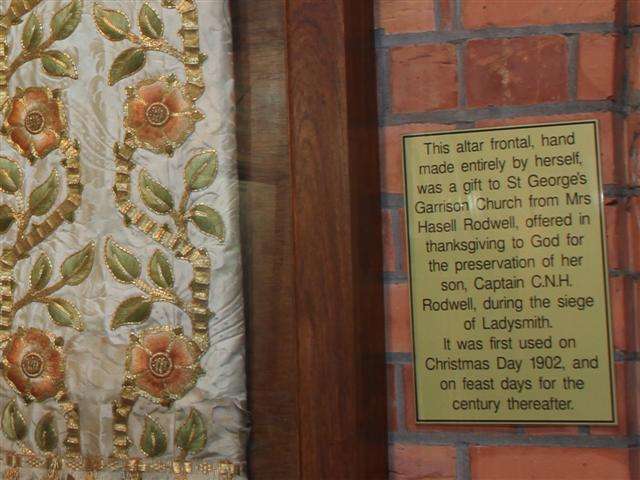  I was quite shocked to see that the smallest list was of soldiers killed in action, the next - those who died of their wounds, and the largest number died of disease.       Even with cement pathways the old foot scrapers for mud on your shoes still intact.     |
|
|
|
Post by Deleted on Jan 2, 2012 18:02:08 GMT
I'll have to come back to admire the photos again, because about half of them are not displaying at the moment.  Whenever Photobucket is not acting up, it is Imageshack's turn! But I know the photos will be back soon, so no worries.... |
|
|
|
Post by tod2 on Jan 2, 2012 18:33:52 GMT
I hope so Kerouac - sometimes one or two of mine come up in a small box with a red X. I click on "Show photo" and up it pops. I have had nothing like that with the ones I loaded tonight....
|
|
|
|
Post by Deleted on Jan 2, 2012 19:12:37 GMT
All of them are fine now!  |
|


































































 (Of course I see the modern building behind the establishment of the entertainment ladies!)
(Of course I see the modern building behind the establishment of the entertainment ladies!)





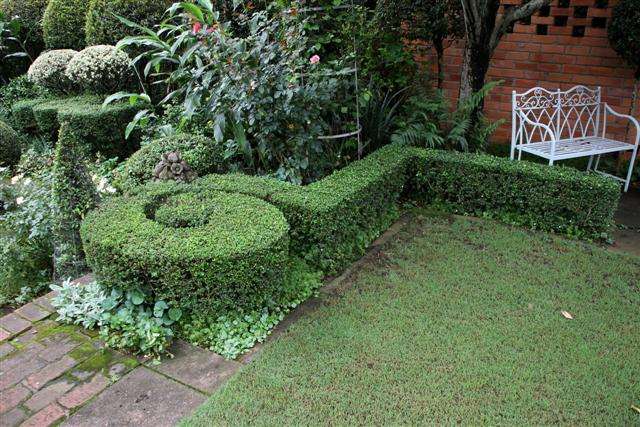


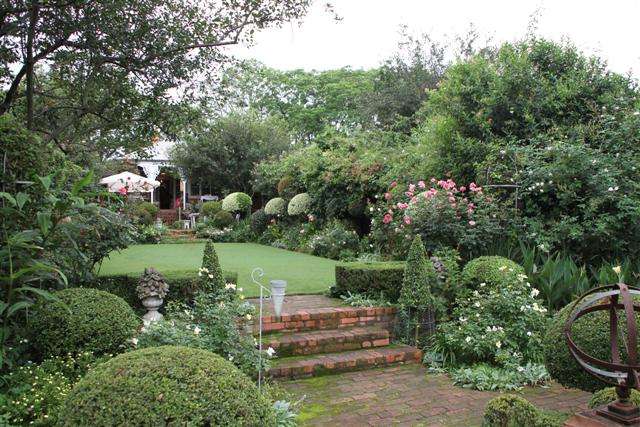




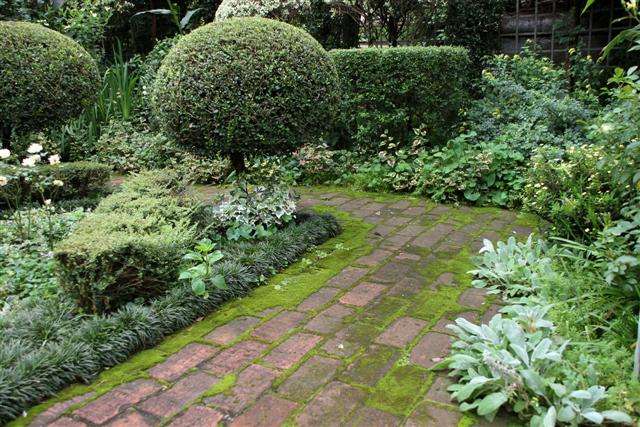












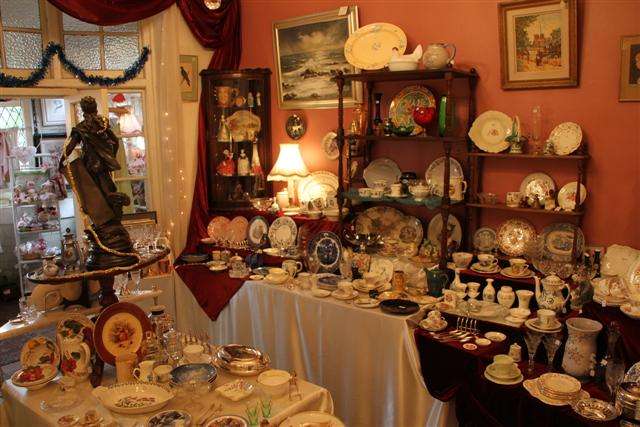

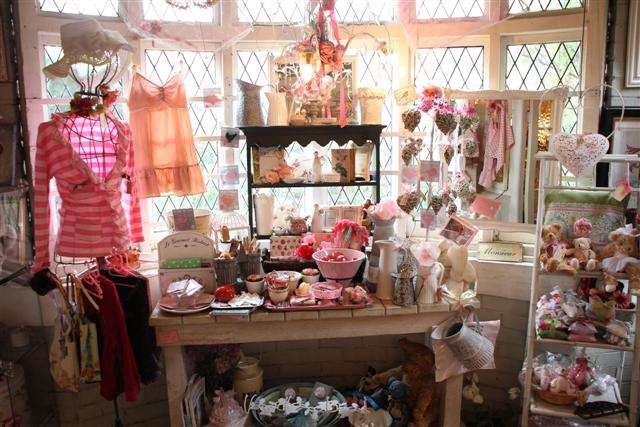






















 It served the only edible food in town besides one other restaurant.
It served the only edible food in town besides one other restaurant.






























































 Absolutely not, tod2. This is one of the best and most complete reports EVER. It really shows all different parts of the city, warts and all. The Victorian aspect reminds me very much of the time I spent in Port Elizabeth, but the tower on city hall reminds me of the Flemish belfries, even though in Flanders they always tried to make them taller.
Absolutely not, tod2. This is one of the best and most complete reports EVER. It really shows all different parts of the city, warts and all. The Victorian aspect reminds me very much of the time I spent in Port Elizabeth, but the tower on city hall reminds me of the Flemish belfries, even though in Flanders they always tried to make them taller.



































 Whenever Photobucket is not acting up, it is Imageshack's turn! But I know the photos will be back soon, so no worries....
Whenever Photobucket is not acting up, it is Imageshack's turn! But I know the photos will be back soon, so no worries....